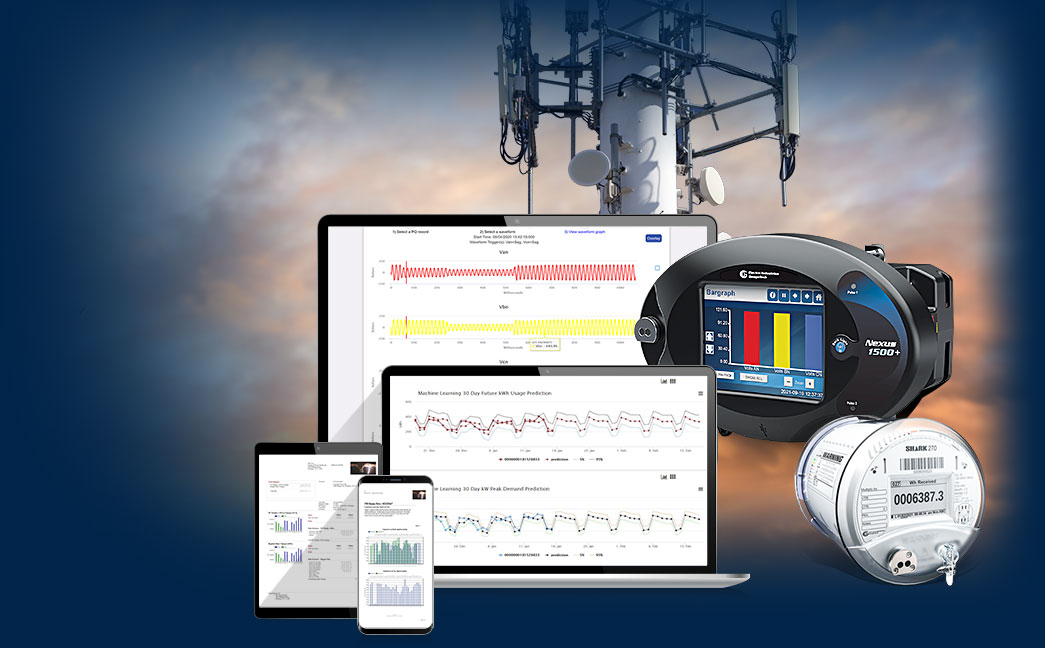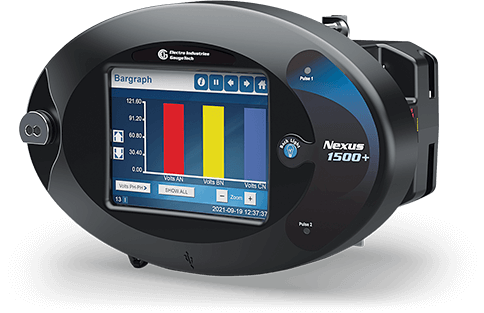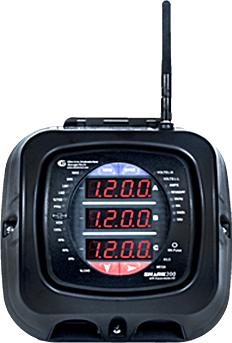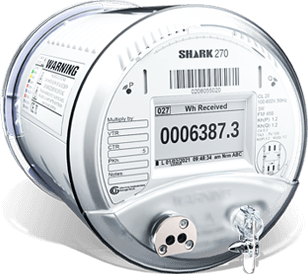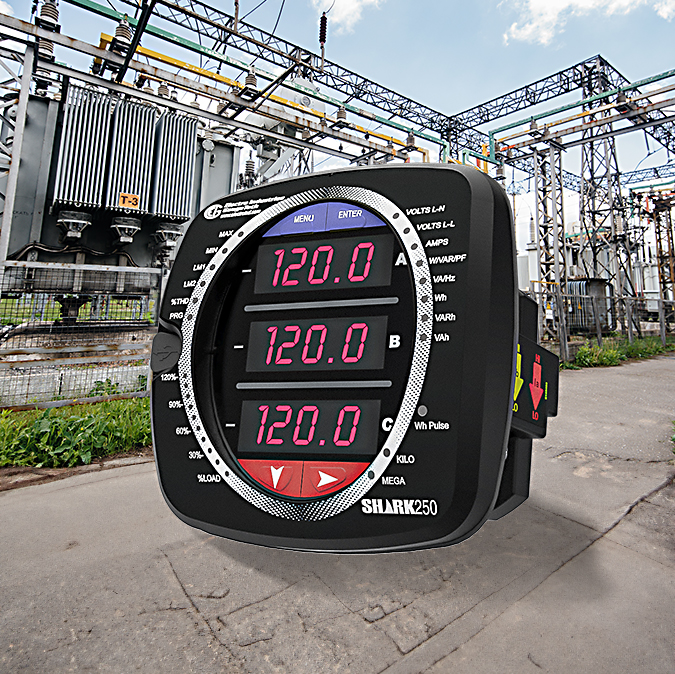Requirements for Cellphone Companies
Telecommunication industry sources say there are over one million cell sites in the United States. Most of these sites are located on private property that is leased from the owner. When cell sites are located on leased properties, the telecommunications company needs to place meters to monitor their energy consumption and demand, in order to reimburse the property owner for their share of the utility bill. This situation leads to a number of challenges.
When non-communicating energy meters are used to monitor the electricity used by the cell site, there is the issue of less accurate measurements as well as the need to manually read the meters on a regular basis. The manual read can be performed by either the telecommunications company’s personnel or by the property owner. Both of these situations can present problems. On the one hand, access to the meters can be difficult for the telecommunications company to arrange. Also, the time and expense required for personnel to travel to the meter site can make this manual read method quite costly. On the other hand, when the telecommunications company needs to rely on the property owner to perform the reading, there is both the possibility of a less experienced person misreading the meters and of the meter reading not taking place in a timely manner. The end result can be confusion in billing, delay in processing the reimbursement to the property owner, and the real possibility of mistakes in allocating the costs which lead to payment discrepancies.
In addition to all of these problems, with non-communicating energy meters there is no way for the telecommunications company to remotely monitor real time operating conditions and identify sites operating out of the normal expected ranges. This is not a good situation for a telecommunications company to be in!
A Better Way
The problems previously described are addressed by implementing an energy management system and meters with digital communication capability:
- With a simple upgrade to an electronic meter with WiFi, Ethernet, or cell modem communication, the necessity of arranging for manual reads is eliminated. No more need for you to go to the time and expense of sending out personnel to read meters at the cell site or waiting for a property owner to read the meter.
- Automatic meter reads and the higher accuracy that the electronic meters offer solves the problem of erroneous measurements and subsequent payment discrepancies. Electronic meters are much more accurate than the older, mechanical meters, and since the usage information is communicated directly from the meter, the risk of inexperience leading to misread usage is eliminated. You can now feel certain that you are paying only for the energy you are actually using.
- Use the EnergyPQA.com® energy management system to view the metered date in energy dashboards and automated reporting. Track energy usage over time and compare usage between sites using the dashboards. Create customizable usage reports that will be automatically emailed on a set schedule. Supply enterprise level usage reporting to upper management and generate billing for the finance department, so that property owners will be reimbursed for exact cell site energy usage.
- Preventing power outages at critical telecom sites is of paramount importance. Receive email alerts of any power quality events using EIG meters and the EnergyPQA.com® system. Email alerts can be set up for all power quality events and for programmed limits, e.g., voltage dropping below a set level. Use power quality dashboards to analyze the power reliability at critical telecom facilities such as data centers and central switching locations. React quickly and take proactive steps to address any power quality problems before they escalate and cause damage to equipment or a power outage.

Generate Customized Usage Reports
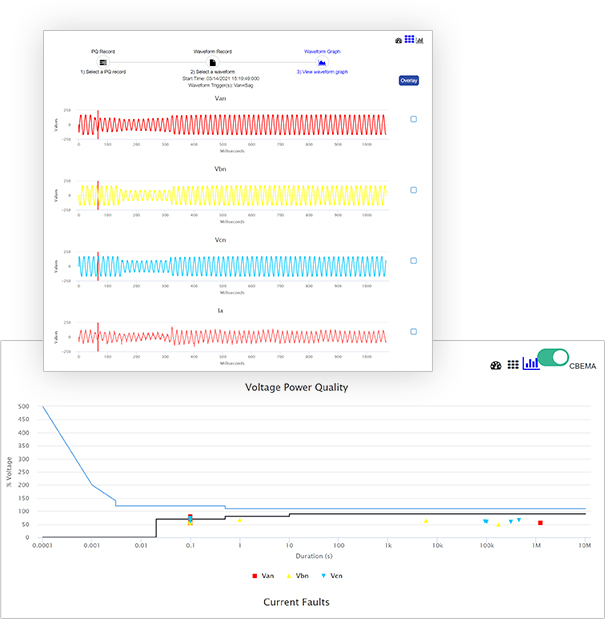
View Waveforms and Power Quality Events
What Should I Use?
Electro Industries’ Shark® 200S submeter and Shark® 270 socket form meter are ideal for use at cellular sites. They provide highly accurate revenue certifiable metering, with an ANSI C12.20 energy measurement accuracy rating of 0.2% for the 200S and 0.1% for the 270, and a high-precision frequency accuracy of 0.007% for both meters. The meters measure all aspects of power and energy, and provide block or rolling window demand for demand averaging.
The Shark® 200S submeter provides IEEE 802.11 WiFi with WEP, WPA, or WPA2 security, for remote communication back to central software, such as EIG’s EnergyPQA.com® AI driven energy management cloud-based system. It also offers an RJ45 Ethernet option for communication. The meter has onboard memory for data logging, to provide the information you need for telemetric analysis. Up to three historical trending logs are available for storing usage information, as well as a Limits/Alarm log that will list any deviations from configured limits, e.g., when voltage drops below a programmed measurement. The meter also has an anti-tampering System Events log that records all actions within the meter, such as resets, power on/off, password logon attempts, etc. and password protection to avoid unauthorized access.
For socket meter installations, the Shark® 270 meter can be a perfect retrofit. It fits standard 9S forms, so you can easily replace a noncommunicating socket meter with the Shark® 270 meter. Its Ethernet communication offers advanced features, such as enhanced security. It is capable of sending emails on configured alarm conditions and can also send periodic notifications of meter readings, to keep you alerted to energy usage at the cellular site. The Shark® 270 meter has onboard memory for logging, with up to eight historical trending logs.
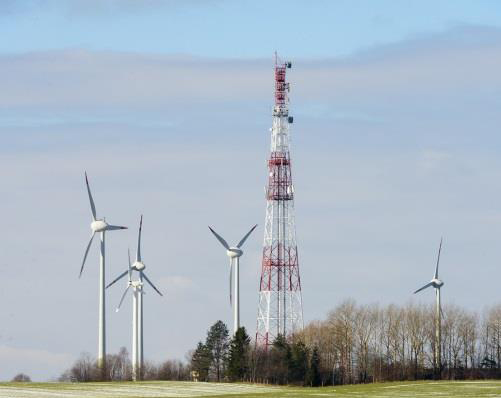
The Nexus® 1500+ meter is designed for critical metering applications, such as switch sites and telecom data centers. It is certified to the IEC 61000-4-30 Class A Edition 3 standard and offers advanced power quality analysis, including waveform recording of up to 512 samples per cycle and subcycle transient recording at 50 MHz resolution. The Nexus® 1500+ meter enables analysis of power reliability at critical sites and provides power quality reliability indices such as CBEMA and SEMI F47. The meter also supports SNMP traps for alerts of power quality events.
The EnergyPQA.com® energy management system provides energy analytics and predictions, reducing costs and improving power system reliability. It surpasses traditional energy management systems by adding energy prediction engines and deep insights into power quality. It identifies the most energy wasteful facilities and circuits to maximize energy efficiency improvements. It also grades facilities for reliability and identifies facilities and circuits with the highest power quality risk to enable proactive steps before problems escalate to the point of outage or damage to equipment. The system provides detailed reports for the enterprise and specific sites that can be automatically emailed to aid in telemetric analysis and cost savings and to provide executive level summaries of energy usage.
Typical Telecommunication Layout
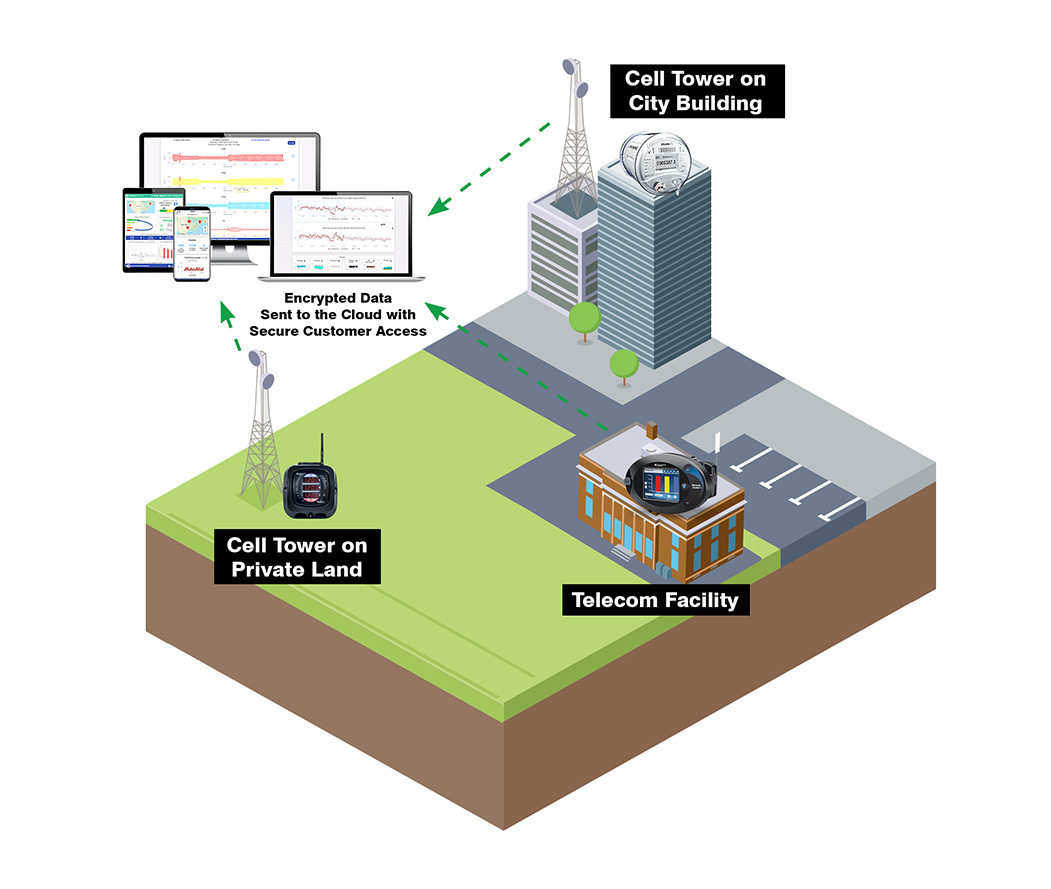
Popular Products used in Energy Management for Telecom
Cloud-Based Energy Management Solution
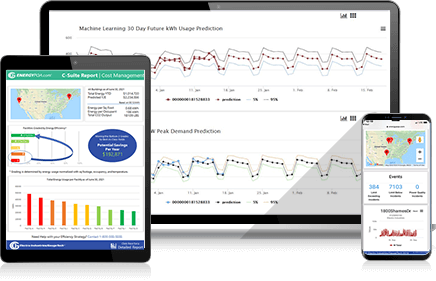
reducing costs, and improving power system reliability
Cloud-Based Energy Management Solution
Critical Load Point
Critical Load Point
Economical WiFi Submeter
Economical WiFi Submeter
4G Cellular Communication
4G Cellular Communication
Engineering Services

Engineering Services
Related Products Used with Energy Management for Telecom
https://www.electroind.com/eigs-energypqa-com-cloud-solution-is-finalist-in-plant-engineerings-2020-product-of-the-year/
https://www.electroind.com/eig-releases-energypqa-com-cloud-based-energy-management-solution/
https://www.electroind.com/facts-you-should-know-about-commercial-energy-waste-in-2019/
https://www.youtube.com/watch?v=XTiIsF1D0Fc
https://www.youtube.com/watch?v=GAVJERWMKeU




